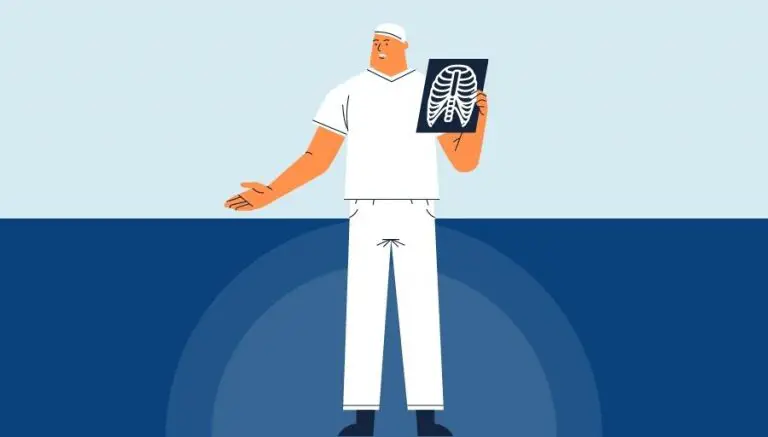How To Use CPT Code 77067
CPT 77067 is a code used for screening mammography, bilateral, including computer-aided detection when performed. This article will cover the description, procedure, qualifying circumstances, when to use the code, documentation requirements, billing guidelines, historical information, similar codes, and examples of CPT 77067 procedures.
1. What is CPT 77067?
CPT 77067 is a medical billing code used to describe a specific type of mammography procedure. This code is used for bilateral screening mammography, which involves taking two X-ray views of each breast, and may include the use of computer-aided detection (CAD) software to help identify potential abnormalities within the images.
2. 77067 CPT code description
The official description of CPT code 77067 is: “Screening mammography, bilateral (2-view study of each breast), including computer-aided detection (CAD) when performed.”
3. Procedure
The 77067 procedure involves the following steps:
- The patient’s breasts are positioned between two plates on the mammography machine.
- The plates are pressed together firmly to compress the breast tissue, allowing for clearer images.
- An X-ray plate exposes the breast to radiation, capturing images from two different angles for each breast.
- If computer-aided detection (CAD) software is used, the images are scanned into the computer for further analysis.
- The CAD software identifies potential abnormalities within the images, marking them for the provider to review.
- The provider reviews the images again, taking note of the CAD-detected abnormalities.
4. Qualifying circumstances
Patients who are eligible to receive CPT code 77067 services are typically women who meet the following criteria:
- Age 40 or older, as recommended by the American Cancer Society for annual screening mammograms.
- No current signs or symptoms of breast cancer, as this code is specifically for screening purposes.
- Not pregnant or breastfeeding, as radiation exposure may pose risks to the fetus or infant.
- Have not had a mammogram within the past 12 months, to avoid unnecessary radiation exposure.
5. When to use CPT code 77067
It is appropriate to bill the 77067 CPT code when a bilateral screening mammogram is performed on a patient who meets the qualifying circumstances listed above. This code should be used for routine screening purposes, not for diagnostic mammograms, which are performed when a patient has signs or symptoms of breast cancer or other breast abnormalities.
6. Documentation requirements
To support a claim for CPT 77067, the following information should be documented:
- Patient demographics, including age and gender.
- Medical history, including any previous breast imaging studies or breast cancer diagnoses.
- Indication for the screening mammogram, such as routine screening or follow-up after a previous abnormal mammogram.
- Details of the procedure, including the use of CAD software if applicable.
- Findings and impressions from the mammogram, including any abnormalities detected.
- Recommendations for follow-up care or additional imaging studies if needed.
7. Billing guidelines
When billing for CPT code 77067, keep in mind the following guidelines and tips:
- If reporting only the physician’s interpretation of the radiology service, append professional component modifier 26 to the radiology code.
- If reporting only the technical component of the radiology service, append modifier TC to the radiology code. Note that some payer policies may exempt hospitals from appending modifier TC, as the hospital’s portion is inherently technical.
- Do not append a professional or technical modifier to the radiology code when reporting a global service in which one provider renders both the professional and technical components.
- Remember that diagnostic mammograms have different CPT codes and should not be billed using CPT 77067.
8. Historical information
CPT 77067 was added to the Current Procedural Terminology system on January 1, 2017. There have been no updates to the code since its addition.
9. Similar codes to CPT 77067
Five similar codes to CPT 77067 and how they differ are as follows:
- CPT 77065: This code is used for diagnostic mammography with CAD, when performed, on a single breast.
- CPT 77066: This code is used for screening mammography with a single view of each breast, rather than the two views required for CPT 77067.
- CPT 77063: This code is used for screening digital breast tomosynthesis, which is a different imaging technique than traditional mammography.
- CPT 76376: This code is used for 3D rendering of imaging data, which may be used in conjunction with mammography but is not part of the standard procedure.
- CPT 76499: This code is used for electrical impedance breast scans, which is a different imaging technique than traditional mammography.
10. Examples
Here are 10 detailed examples of CPT code 77067 procedures:
- A 45-year-old woman with no history of breast cancer undergoes a routine bilateral screening mammogram, including CAD.
- A 55-year-old woman with a family history of breast cancer receives a bilateral screening mammogram with CAD as part of her annual checkup.
- A 60-year-old woman undergoes a bilateral screening mammogram with CAD one year after a previous mammogram showed benign calcifications.
- A 50-year-old woman with dense breast tissue receives a bilateral screening mammogram with CAD to improve detection of potential abnormalities.
- A 42-year-old woman undergoes a bilateral screening mammogram with CAD as a baseline study before starting hormone replacement therapy.
- A 65-year-old woman with a history of benign breast lumps receives a bilateral screening mammogram with CAD as part of her routine care.
- A 48-year-old woman undergoes a bilateral screening mammogram with CAD after a clinical breast exam revealed no abnormalities.
- A 53-year-old woman with a previous history of breast cancer in remission receives a bilateral screening mammogram with CAD as part of her follow-up care.
- A 70-year-old woman with no history of breast cancer undergoes a bilateral screening mammogram with CAD as part of her routine care.
- A 58-year-old woman with a history of atypical ductal hyperplasia receives a bilateral screening mammogram with CAD to monitor for potential changes in her breast tissue.



